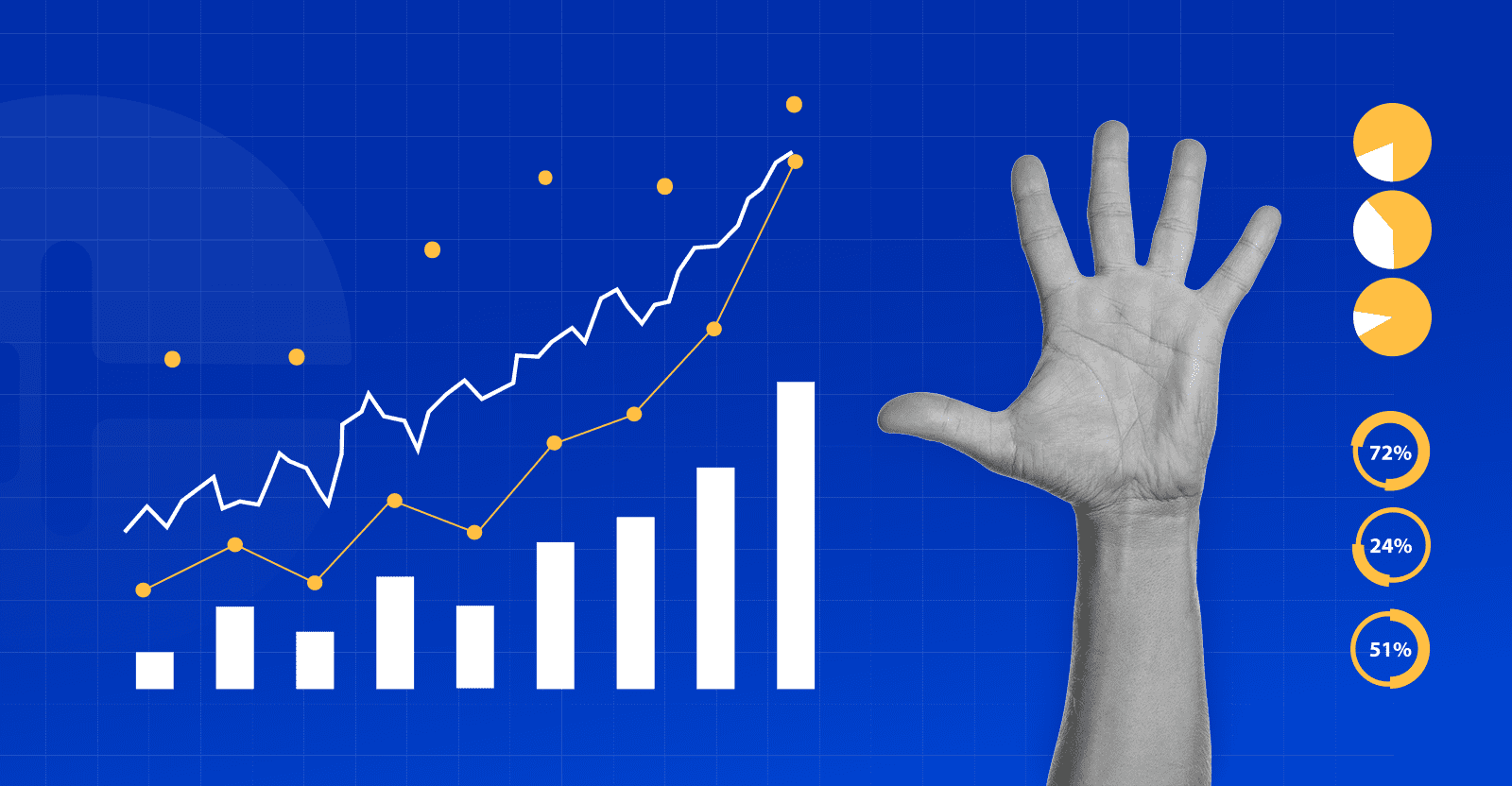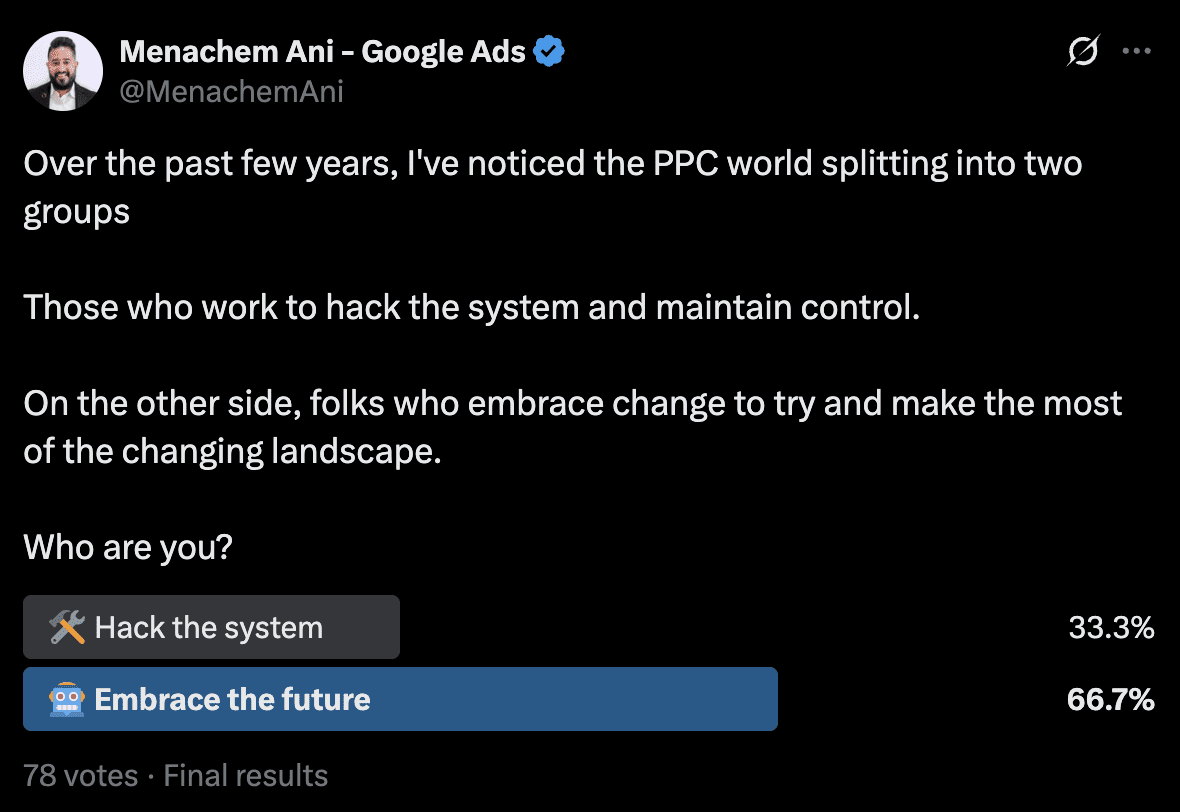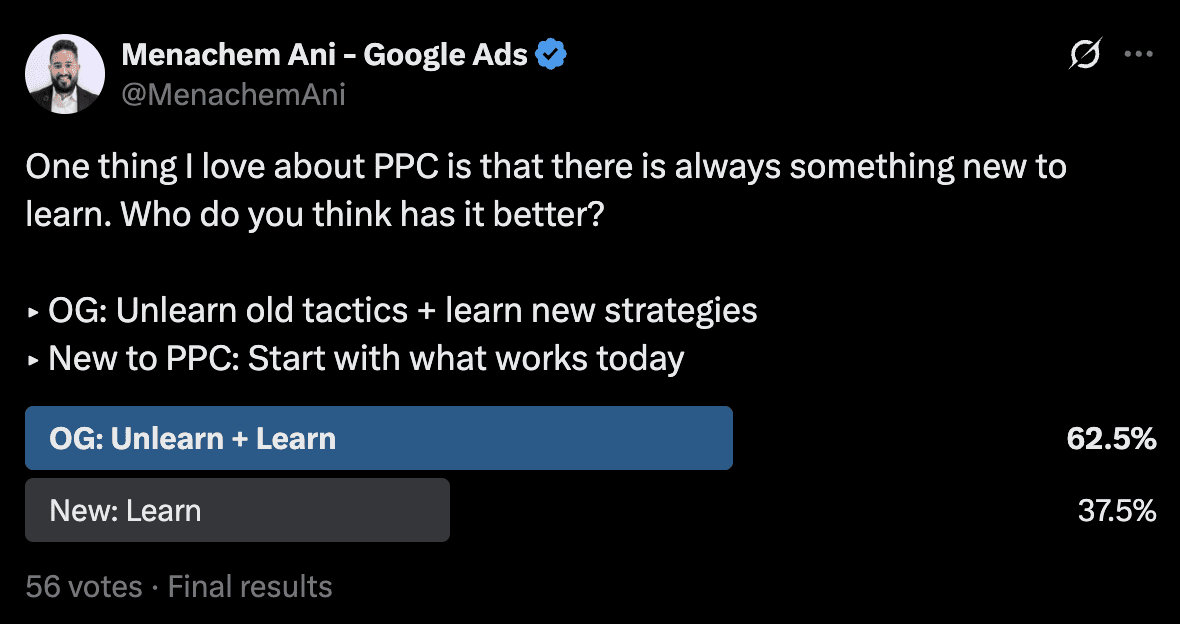Performance Max has become one of the most talked-about campaign types in PPC for a number of reasons.
Some advertisers swear by it, while others remain skeptical, and opinions are increasingly polarized.
In reality, PMax is neither flawless nor fundamentally flawed. It is a campaign type with both advantages and drawbacks, and deciding whether to use it requires nuance.
Before taking a “for or against” stance, consider how PMax evolved, why the industry is divided, and when this campaign type makes strategic sense.
Starting at the beginning, let’s look into where this evolved from.
A Brief Timeline On PMax
Google officially launched Performance Max in late 2021, a milestone in terms of automation in Google Ads.
By 2022, it had effectively absorbed Smart Shopping and Local campaigns, consolidating multiple ad networks and formats into one unified solution.
The reason this change marked a major shift in PPC strategy was that advertisers no longer had to manage separate campaigns for each channel (in theory).
Adoption of PMax was rapid, in part because Google’s transition forced the issue.
Smart Shopping campaigns were auto-upgraded to PMax, so many advertisers found themselves using PMax whether they planned to or not.
By mid-2024, PMax accounted for ~82% of Google advertising spend within retail alone, and the simplicity of PMax began making waves with smaller advertisers.
In a relatively short space of time, this momentum signaled that PMax was not a niche experiment or small change by Google, but a mainstream part of the ecosystem that signified the direction in which Google Ads is going.
Back when PMax launched, there were expected growing pains. The lack of transparency and many controls advertisers were used to over decades of managing PPC were essentially removed, and the term “black box” became widely used for this campaign type.
Was this fair? In my opinion, at launch, yes.
Campaign management went from having complete control over search queries, ad networks, auctions, etc, to a five-step process:
- Choose an objective.
- Choose a conversion goal.
- Create the campaign.
- Create the asset group/s.
- Finalize and launch.
Then, where the real grunt work with optimization sets in post-launch, advertisers were simply told to leave the campaign to gather data, not knowing where their ads served, how their budget was apportioned, and more.
Advertisers essentially handed the keys to Google’s AI without the usual levers to guide it. For years, PPC professionals had built careers on meticulous campaign control, and it was gone.
However, over the past three years, PMax has changed considerably, with Google addressing some key concerns raised by advertisers.
Google added a selection of reports and control features that didn’t exist in 2022, including features like search term insights, asset group reporting, and brand exclusions.
Some of these updates feel like genuine concessions to give advertisers more transparency and control, but within the world of PPC, it’s felt that it’s still not enough.
Despite these improvements, opinions remain split, largely because the fundamental trade-off of PMax (automation vs. control) still exists.
To understand the divide, let’s look at both sides of the argument.
The Case ‘For’ Performance Max
Simplified Cross-Channel Reach
Instead of siloed Search, Display, Shopping, and YouTube campaigns, PMax’s machine learning decides where to show ads to best meet your goals (in the words of Google).
For resource-strapped teams, the convenience of an all-in-one campaign is attractive as it significantly reduces the complexity of managing multiple campaigns.
Here are a couple of cases:
- SME with a single person heading up marketing: PMax fits the brief as it allows them to remove the complexity of managing PPC and allows them to enter auctions across multiple networks without the need for external help or an internal hire.
- Multinational with a 10-person digital team: PMax can plug gaps or test new markets with minimal setup. The team can still maintain control over core campaigns where channel-specific insights, custom bidding strategies, and creative testing are essential, but PMax allows them to expand and test the waters quickly.
Automation And Efficiency
Data signals and algorithms adjust bids in real time and find the right audience for your ads across channels.
This isn’t new (think automated bidding). However, PMax is advertising across multiple ad networks.
There are plenty of case studies out there showing how automation improved performance, one in particular where Google highlighted a case where a Latin American travel company, AssistCard, saw a 15x higher conversion rate and 40% lower CPA in PMax vs. similar campaigns without it.
When set up properly, PMax’s automation can efficiently drive performance in ways manual tweaks might miss by building out each campaign in silo, and as ever, it depends on the case at hand.
Reach And Testing
Because PMax has wide latitude to find conversions anywhere on Google, it can rapidly scale campaigns that are doing well.
If your offer and creative are effective, PMax will seek out all available inventory to get in front of relevant users.
It’s also a useful way to test new channels, e.g., if you’ve never tried YouTube or Display, PMax will allocate some spend there and let you see how those channels perform as part of a blended campaign.
You can then review performance via the channel performance report or one of the many scripts available online.
The hands-off nature of PMax appeals to advertisers who want to uncover new opportunities without heavy lifting on their part.
Low Barriers To Entry
The simplicity of PMax can lower the barrier to entry for advertisers without dedicated PPC teams or external support.
Instead of learning the ins and outs of feeds, keywords, bids, and multiple campaign types, a business can input its goals and creative assets, then hand off to Google to do the rest.
In essence, PMax offers plug-and-play advertising that aligns with limited time and expertise, whilst boasting strong results for brands of all sizes.
Continuous Innovation
Google is heavily invested in PMax. Just look at the journey advertisers have been on over the last three years with PMax and where we are now with regards to features, reporting, and optimization.
Google’s SVP & Chief Business Officer Philipp Schindler states in 2022 that “we’re very, very committed to helping Performance Max deliver for our advertisers and have been very open to advertiser feedback how we can do this.”
Over the last decade, there has not been a campaign type/feature that has received this level of investment. This commitment is part of the reason why PMax now accounts for nearly 82% of all retail Google Ads spend in 2025.
So, where does the scepticism come from if it’s such a key part of advertising strategies? Let’s get into that.
The Case ‘Against’ Performance Max
Loss Of Control Over Targeting & Bidding
Handing over targeting and bidding decisions to Google is a bitter pill for seasoned PPC professionals.
With PMax, you can’t choose specific keywords or placements; Google’s AI decides when and where your ads show.
Advertisers effectively relinquish the levers they normally use to steer campaigns, and there are two ways to look at this:
- “How do I know where my budget is being spent and what is working/isn’t?”
- “How can I scale spend and optimise performance without the data?”
As much as PMax now has features to see performance down to a certain level of detail, it’s still not enough to grasp control of media spend and make actionable changes based on the queries and audiences the ads are being served to.
Limited Data And Reporting
Data is the heart of PPC and has been from the start.
Take search terms, visibility through PMax is still limited with broad “search category” insights rather than the exact queries users searched.
Cross-network reporting also lacks depth. Combined results from Search, Display, YouTube, etc., make it hard to break out performance by channel or asset in a meaningful narrative that can be translated into short-term optimizations and long-term strategy.
Although Google has added some reporting improvements, advertisers still don’t get the full picture, which can be frustrating when sharing performance updates to teams, management, or clients.
Transparency & Brand Safety Concerns
PMax decides how budget is allocated across channels and audiences, with advertisers having only a snapshot view of where the budget is going.
For example, a retail PMax campaign might be spending heavily on dynamic retargeting or branded searches (which can be negated using the request form, but, in my experience is not always a guarantee that brand will stop serving in ad auctions). It raises the question: Is PMax really driving new incremental customers or just capturing easy wins?
Alongside this, advertisers have auto-generated assets, enhanced images, AI-suggested copy, and more to deal with when managing their campaigns.
Features like this add layers of complexity when deciding whether or not to use PMax. Sectors, such as luxury fashion with strict brand guidelines, simply cannot give creative freedom to Google when advertising on networks as vast as GDN.
Cannibalization Of Other Campaigns
Running PMax alongside traditional campaigns has historically been tricky.
When PMax first launched, it was a bit of a blurred area with which campaigns would take priority when factoring in standard Search or Shopping campaigns for the same products/audiences.
Google has now shared the details on this, stating that PMax and standard Shopping can compete more evenly based on ad rank and that PMax will not override shopping; both will enter auctions that are eligible for, and the ad rank will determine which shows.
Aside from the auction, there are other factors involved in running a portfolio of campaign types, such as search query overlap, where advertisers have to define queries between campaigns.
This isn’t anything new, but the process of negating queries for PMax is more convoluted than adding negative keywords to search or shopping.
Inconsistency And Unproven For All Cases
If you’ve followed the narrative surrounding PMax, you’ll have read that it works great for some advertisers and is diabolical for others.
Post launch, some advertisers simply found that their carefully optimized standard campaigns outperformed PMax.
For instance, one industry analysis noted that PMax conversion rates in late 2024 were slightly lower (about 2%) than those of standard Shopping campaigns.
Others found that moving to a fully automated solution actually delivered uplifts in performance, with Google stating an average increase in revenue of 27% vs. non-PMax.
This uncertainty makes risk-averse advertisers inclined to stick with what they know. Others, who are more open to experimentation, treat PMax as a testing ground and embrace automation when it proves its value.
Moving Beyond A Polarized View
In reality, the truth about Performance Max lies somewhere in the middle.
Rather than asking, “Should we use PMax or not?” a better question is, “In what scenarios does PMax make sense for us?” Framing it as simply good or bad is too simplistic.
As with most marketing strategies, whether PMax is right for you depends on context, your business, goals, and resources.
Business Objectives
What are you trying to achieve? If your goal is broad reach and top-line conversion growth, PMax’s all-channel approach could align well.
It could efficiently drive online sales or leads when you aren’t as concerned with a specific channel mix.
On the other hand, if your goals require tight control (e.g., a precise cost per acquisition target for a niche B2B product or a brand that can only serve on very specific ad auctions), you might favor more hands-on campaigns.
Ensure PMax’s optimization style matches your KPIs and tolerance for how those results are achieved.
Resource & Expertise
Do you have a team that can manage campaigns or a portfolio of campaigns, or do you need an automated solution without heavy lifting?
A lean organization with limited PPC staff may benefit from PMax handling the heavy lifting across channels.
Conversely, a large team or agency with deep expertise might squeeze more performance from manual control in Search or Shopping campaigns.
Also, consider the tools at your disposal. If you have sophisticated in-house data and optimization systems, you might not want to relinquish control to Google’s black box.
Data And Tracking Requirements
Advertisers with strict data requirements (for example, those who need to see every search query for compliance or want to segment performance by niche audiences) will struggle with PMax’s opacity.
If full transparency is non-negotiable, PMax may not be a fit for those campaigns.
However, if you can work with modeled and aggregate data, and you measure success on bottom-line results, PMax’s data limitations might be acceptable.
Personal And Organizational Appetite For Change
Companies vary in how they adopt new technology. Some are innovators or early adopters who eagerly try new Google features; others are late adopters or even laggards who resist change.
This human factor shapes PMax opinions.
If your organization values being on the cutting edge (and can tolerate some volatility), you may have leaned toward giving PMax a shot early.
If your culture is very risk-averse, you might have held off until there’s more industry-wide proof and Google has ironed out the kinks.
Neither approach is “wrong,” but it should be a conscious strategic choice rather than a knee-jerk stance.
Summary: A Strategic Middle Ground
In some cases, the optimal approach could be a hybrid.
For example, some advertisers run Performance Max alongside standard Search or Shopping campaigns and find a balance that works.
You might use PMax to cover certain areas (like display retargeting, non-brand terms with controlled exclusions, etc.) while still running dedicated campaigns for core products or certain keywords where you need more control.
Google has been listening to advertisers and agencies, with ongoing updates allowing PMax and traditional campaigns to coexist more harmoniously (no more automatic overriding of standard campaigns).
This opens the door to a nuanced account strategy that leverages PMax where it excels and uses other tactics where they’re stronger.
A mix-and-match strategy could outperform an all-or-nothing approach, or it might be one over the other; it’s just something you wouldn’t know without testing.
PMax today is more flexible than PMax three years ago.
As Google continues to refine the platform, some of the early drawbacks are being mitigated.
Advertisers who were against PMax due to a specific missing feature may find that the issue has since been addressed.
This is why it’s worth continuously re-evaluating your stance and testing on a case-by-case basis.
More Resources:
Featured Image: Roman Samborskyi/Shutterstock











